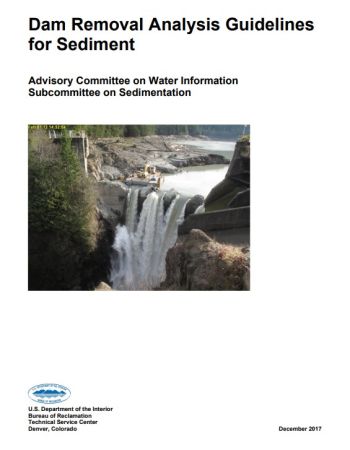Dam Removal Analysis Guidelines for Sediment: Difference between revisions
(Created page with "{{References Template |author= <!-- Add author/publisher below--> The United States Bureau of Reclamation |date= <!-- Add publication year --> 2017 |picture= <!--create a file below in format File:example.png, then add picture to that file--> File:Dam Removal.jpg |link= <!-- Add Url to document below (To retrieve URL from a pdf, add document as a pdf file and copy link address from its page--> https://3.238.206.13/images/5/52/Dam_Removal.pdf |abstract= <!-- Add...") |
Rmanwaring (talk | contribs) No edit summary |
||
| Line 15: | Line 15: | ||
|link= | |link= | ||
<!-- Add Url to document below (To retrieve URL from a pdf, add document as a pdf file and copy link address from its page--> | <!-- Add Url to document below (To retrieve URL from a pdf, add document as a pdf file and copy link address from its page--> | ||
https:// | https://damsafetytoolbox.org/images/5/52/Dam_Removal.pdf | ||
|abstract= | |abstract= | ||
Revision as of 20:16, 13 December 2022
The United States Bureau of Reclamation, 2017

As of 2016, American Rivers reported that nearly 1,400 dams have been removed in the United States. Dam removal is expected to continue in the future with changing environmental values, aging infrastructure, and continued reservoir sedimentation. Sediment management can be an important aspect of a dam removal projects and significantly affect the implementation cost. The amount of required sediment data collection and analysis for dam removal projects has varied widely across the United States and is not always in concert with the actual risk of sediment impacts. Therefore, the interagency Subcommittee on Sedimentation has sponsored the development of national guidelines for assessing sediment-related effects from dam removals. These guidelines build upon concepts developed at workshops with national experts from government, universities, consultants, and non-governmental organizations, and from the benefit of numerous case studies from locations across the United States.
The dam removal analysis guidelines for sediment are written for engineers and scientists who have at least a basic understanding of river hydraulics and sediment transport (see Appendix A for additional reservoir sedimentation background). The guidelines include ten steps that match the level of data collection, analysis, and mitigation to the estimated risk of potential sediment impacts (see flow chart below). The guidelines suggest an iterative analysis approach, starting with readily available information and revisiting or repeating analysis steps as more data become available. Once the user of these guidelines is aware of various sections and the analysis flowchart, the guidelines do not have to be read in sequential order.
Revision ID: 5366
Revision Date: 12/13/2022
